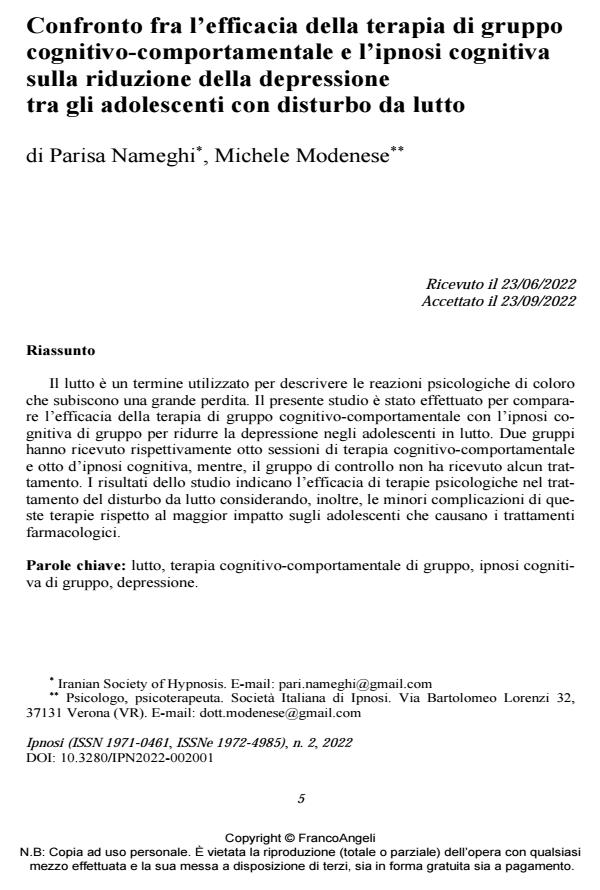Comparison between the effectiveness of cognitive-behavioral group therapy and cognitive hypnosis in reducing depression among adolescents with bereavement disorder
Journal title IPNOSI
Author/s Parisa Nameghi, Michele Modenese
Publishing Year 2023 Issue 2022/2
Language Italian Pages 14 P. 5-18 File size 198 KB
DOI 10.3280/IPN2022-002001
DOI is like a bar code for intellectual property: to have more infomation
click here
Below, you can see the article first page
If you want to buy this article in PDF format, you can do it, following the instructions to buy download credits

FrancoAngeli is member of Publishers International Linking Association, Inc (PILA), a not-for-profit association which run the CrossRef service enabling links to and from online scholarly content.
Grief is a term used to describe the psychological reactions of those who expe-rience a great loss. The present study was carried out to compare the efficacy of cognitive-behavioral group therapy with cognitive group hypnosis to reduce de-pression in bereaved adolescent. Two groups received respectively 8 sessions of cognitive-behavioral therapy and 8 sessions of cognitive hypnosis while the control group did not receive any treatment. The results of the study are logical with re-spect to the efficacy of psychological therapies in the treatment of bereavement disorder, also considering the lower complications of these therapies to the greater impact on the adolescents who cause the drug treatments.
Keywords: grief, self, hypnosis, future, crisis, self-representations.
- Effetti della terapia con ipnosi cognitiva nel trattamento di adolescenti con disturbo post-traumatico da stress Parisa Nameghi, Michele Modenese, in IPNOSI 2/2025 pp.24
DOI: 10.3280/IPN2024-002002
Parisa Nameghi, Michele Modenese, Confronto fra l’efficacia della terapia di gruppo cognitivo-comportamentale e l’ipnosi cognitiva sulla riduzione della depressione tra gli adolescenti con disturbo da lutto in "IPNOSI" 2/2022, pp 5-18, DOI: 10.3280/IPN2022-002001